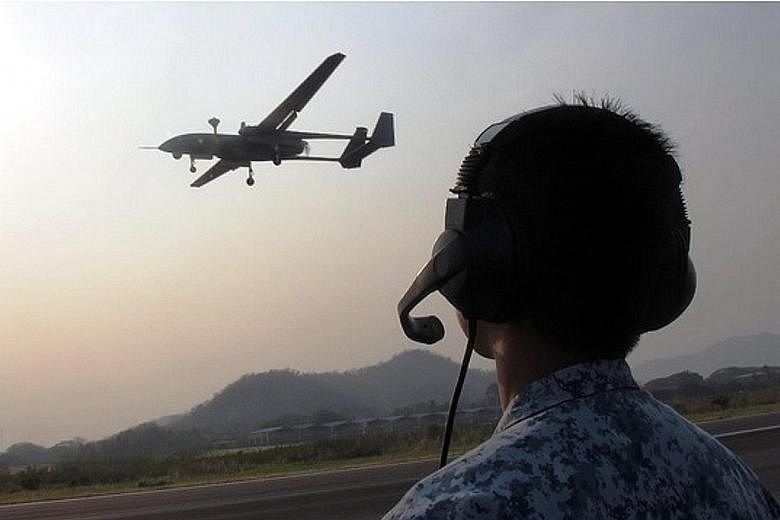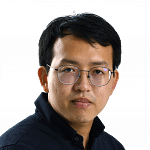An invisible security blanket that has been protecting Singapore from potential air threats after 2006 is seeking an upgrade in a new frontier: unmanned aerial vehicles (UAVs).
Defence Science and Technology Agency (DSTA) engineers involved in the country's enhanced Island Air Defence (IAD) system are hoping to plug the Republic of Singapore Air Force (RSAF) UAVs into the multilayered, islandwide network.
The IAD already links up all of the RSAF's air defence weapons and sensors, including surface-to-air missiles and multipurpose radars, in monitoring the skies over Singapore and responding swiftly to potential threats.
Another aim is to ensure that the IAD remains updated in detecting potentially hostile UAVs, given how they have become more accessible and advanced.
For the first time, key members of the DSTA team behind the IAD system shared in a recent interview how these systems worked together, in line with the RSAF's 50th anniversary celebrations this year.
DSTA's engineers had to develop this award-winning homegrown capability from scratch, due to Singapore's unique requirements, such as topography.
Programme director Oh Siew Leng, 51, who heads the design and development of the IAD system, said: "In Singapore, there are not many high points. That's why we have a limitation in terms of where to deploy all our systems.
"If you have more systems, they will interfere with one another as well. That's why there's a space as well as a spectrum constraint in our air defence solution."
For their work on the air defence system, the team bagged a Defence Technology Prize in 2016. The prize is the most prestigious defence technology award given by the Ministry of Defence.
The team award was given for those who had "outstanding achievements in the delivery of highly complex engineering solutions and integration systems".
The network allows multiple "sensors" and "shooters" to work together as a pool of centralised resources, ensuring continued capability even in the event that some of the assets are taken down.
In terms of UAV improvements, video analytic tools are now used to spot key features among the potentially hundreds of hours of footage captured.
Head of capability development Hia Lee Kee, 44, who headed the development of several UAV platforms, including the Heron 1 and Skyblade III, said her team's contribution is in enabling UAVs to provide the RSAF with the edge in early warning surveillance.
Ms Hia, who has worked with DSTA for 15 years, said: "Because it's unmanned, so lives are saved, they are not subject to immediate danger by sending them out to collect information." She added that with drones now more accessible, the air force is keeping itself updated as they can now pose as threats by infringing on airspace.
The RSAF first used UAVs in the late 1970s, and has upgraded its platforms with the Heron 1 turning fully operational last year.
"Our UAVs are no longer just eyes in the skies, but packed with advanced features that reduce the workload of operators.
"We hope the future of UAVs is one where not only is there a high level of automation, but (they are) also highly connected to existing networks for early detection of threats before they reach Singapore," she added.


